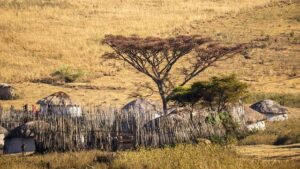Phoenix has earned a sobering distinction as the hottest city in the United States, grappling with extreme temperatures that regularly shatter records. In response to this relentless heat, the city has established the countryŌĆÖs only dedicated heat teamŌĆöan innovative task force aimed at protecting vulnerable residents and mitigating the impacts of soaring temperatures. This article explores how Phoenix is confronting the challenges of climate change head-on, blending public health strategies with community outreach to keep residents safe in an increasingly sweltering environment.
Phoenix Faces Unrelenting Heat Wave Challenges as Temperatures Soar
PhoenixŌĆÖs unyielding heat challenges not only push residents to their limits but have also forced city officials to innovate solutions quickly. The metropolitan area continuously records some of the highest temperatures in the nation, frequently surpassing 110┬░F during summer months. Alongside the physical toll, this relentless climate exposes vulnerable populationsŌĆöespecially the elderly, low-income families, and outdoor workersŌĆöto heightened health risks. The dedicated Heat Team operates as an urgent response force, coordinating cooling centers, distributing water and emergency supplies, and monitoring heat-related illness reports to save lives.
Key strategies deployed by the Heat Team include:
- Rapid response units mobilized during peak heat hours to provide on-the-ground assistance.
- Targeted outreach campaigns to inform the public about heat safety and hydration practices.
- Collaboration with local hospitals to track heat stroke incidents and identify hotspots.
- Innovative urban planning promoting shade infrastructure and heat-reflective materials in city projects.
| Aspect | Impact | Heat Team Role |
|---|---|---|
| High Emergency Calls | Surges during afternoon | Deploy paramedics & outreach |
| Power Grid Strain | Increased air conditioning use | Advise on energy savings & safety |
| Vulnerable Populations | Greater heat exposure risks | Home visits & public messaging |
Inside the Nation’s Only Dedicated Heat Team Tackling Extreme Heat Risks
In the sweltering heart of Arizona, Phoenix stands apart not only for its record-breaking summer temperatures but also for its pioneering approach to combating extreme heat. The city’s dedicated heat team operates as a rapid-response unit, coordinating efforts across public health, emergency services, and urban planning. Their mission: to reduce heat-related illness and mortality among the most vulnerable populations during scorching heat waves. Equipped with real-time weather data and geospatial technology, the team identifies hotspots and dispatches cooling centers, hydration stations, and medical aid precisely where they are needed most.
The heat teamŌĆÖs strategy relies heavily on community engagement and innovative solutions that go beyond traditional measures. Their multifaceted approach includes:
- Outreach campaigns targeting elderly citizens and outdoor workers
- Partnerships with local nonprofits to distribute cooling kits
- Heat mapping to prioritize emergency response routes
- Infrastructure adjustments such as reflective road coatings and shaded bus stops
These efforts are bolstered by a data-driven framework, enabling Phoenix to serve as a national model for urban heat mitigation in the face of climate change.
Community Outreach and Cooling Strategies Key to Combating Urban Heat
PhoenixŌĆÖs approach to urban heat management goes beyond infrastructure; it places a strong emphasis on community engagement. The city’s Heat Team collaborates with neighborhood leaders and local nonprofits to educate residents on heat risks and distribute resources such as cooling kits and hydration stations. These efforts are critical in vulnerable areas where access to air conditioning and shaded public spaces is limited. By fostering partnerships rooted in trust and cultural understanding, Phoenix ensures that heat safety strategies reach those who need them most, particularly the elderly and outdoor workers.
In parallel, the cityŌĆÖs innovative cooling strategies aim to reduce ambient temperatures through both short-term relief and long-term resilience. Key initiatives include:
- Urban tree planting programs that increase canopy cover and provide vital shade.
- Cool pavement projects using reflective materials to reduce heat absorption on sidewalks and roads.
- Implementation of green roofs that insulate buildings and lower surrounding air temperatures.
Collectively, these targeted measures serve as a blueprint for other cities facing rising temperatures, proving that when community-driven action and innovative cooling techniques unite, urban heat hazards can be significantly mitigated.
Policy Recommendations for Cities Confronting Increasing Heat Emergencies
Urban centers grappling with escalating heat emergencies must prioritize adaptive strategies that address both immediate risks and long-term resilience. Investing in dedicated heat-response teamsŌĆömodeling PhoenixŌĆÖs pioneering approachŌĆöcan drastically reduce heat-related morbidity and mortality by ensuring rapid outreach to vulnerable populations during extreme temperature events. These teams should collaborate with local health agencies and community groups to distribute cooling resources, offer heat-safety education, and conduct risk assessments neighborhood by neighborhood.
Municipal policies should also emphasize sustainable urban design modifications that mitigate heat buildup. Key interventions include:
- Expanding green spaces to provide natural shade and reduce urban heat islands
- Incorporating reflective roofing and pavement materials to minimize heat absorption
- Enhancing building codes that promote energy-efficient cooling systems and passive ventilation
- Improving emergency heat warning systems through real-time data integration and community alerts
| Policy Area | Example Action | Anticipated Impact |
|---|---|---|
| Heat-Response Teams | 24/7 outreach and relief operations | Reduced heat-related hospital admissions |
| Urban Greening | Planting native trees in public spaces | Lowered neighborhood temperatures by up to 5┬░F |
| Building Regulations | Mandatory cool roofs in new constructions | Decreased energy demand for cooling |
Closing Remarks
As Phoenix continues to grapple with soaring temperatures and the increasing severity of heatwaves, the cityŌĆÖs dedicated heat team represents a critical frontline defense in protecting vulnerable residents. This innovative approach underscores the urgent need for targeted strategies to address extreme heat, a growing challenge across the United States. While Phoenix may hold the record for the nationŌĆÖs hottest city, its pioneering efforts offer valuable lessons for other communities facing the escalating threat of climate change and extreme heat in the years ahead.







